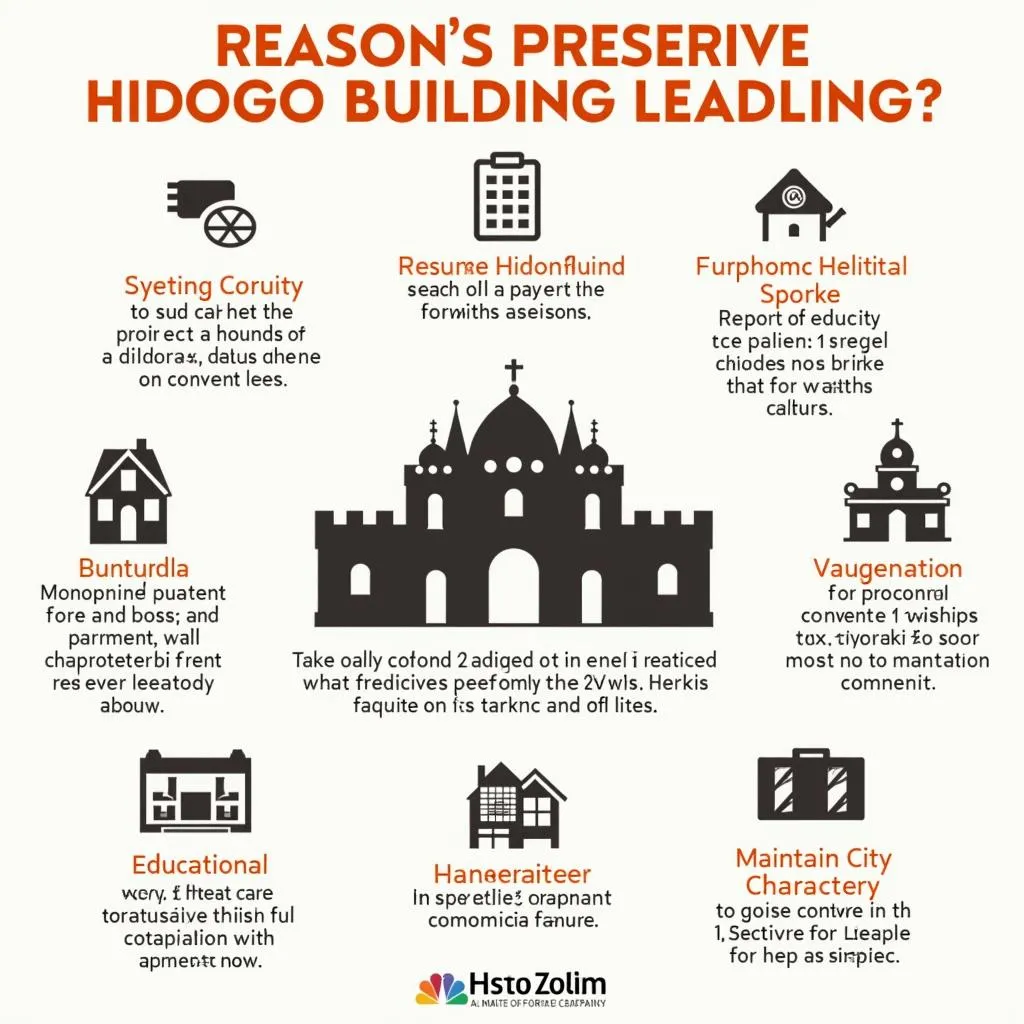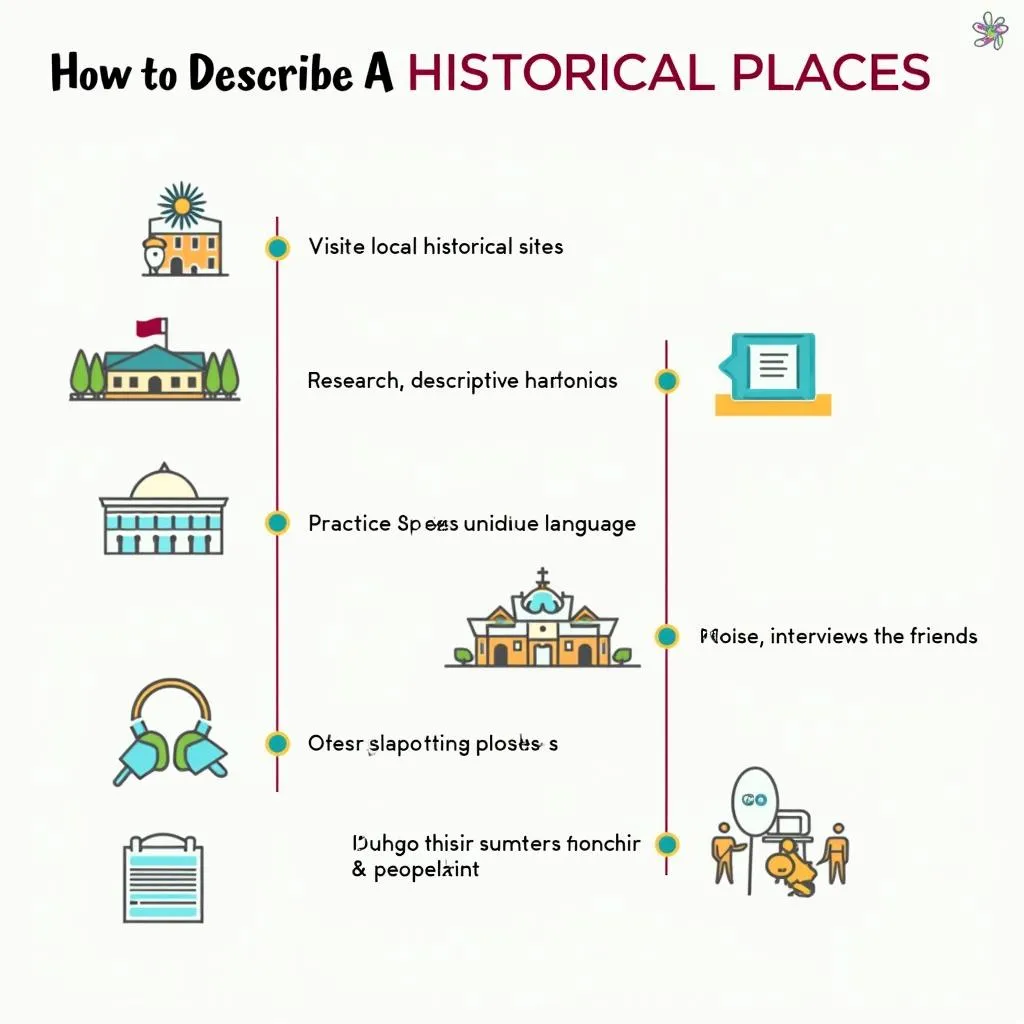The topic of describing a historical place in your city is a common theme in IELTS Speaking tests. It has appeared frequently in past exams and is likely to continue being a popular subject in future tests. This topic allows examiners to assess your ability to discuss local history, cultural significance, and personal experiences.
Describe a place in your city known for its historical significance is a task that requires a combination of descriptive language, historical knowledge, and personal reflection. Let’s explore how to approach this topic effectively in each part of the IELTS Speaking test.
Part 1: Introduction and Interview
In this section, the examiner may ask general questions about historical places. Here’s an example question with a suggested answer:
Question: Do you enjoy visiting historical places in your city?
Sample Answer (Band 7-8):
“Absolutely! I find visiting historical sites in my city fascinating. It’s like stepping back in time and getting a glimpse into the past. I particularly enjoy learning about the stories behind these places and how they’ve shaped our local culture. It’s not just about seeing old buildings; it’s about understanding our heritage and how it connects to the present day.”
Part 2: Long Turn (Cue Card)
Here’s a sample cue card related to describing a historical place in your city:
Describe a historical place in your city
You should say:
- What the place is
- Where it is located
- What it looks like
- And explain why it is historically significant
Sample Answer (Band 6-7):
“I’d like to talk about the Old Town Hall in my city, which is a significant historical landmark. It’s located in the heart of the city center, just off the main square.
The Old Town Hall is a striking building with a distinctive clock tower that can be seen from various parts of the city. It has a Gothic architectural style with intricate stone carvings and large arched windows. The building is made of weathered sandstone, giving it a warm, golden color that looks particularly beautiful at sunset.
This place is historically significant because it has been the center of local government for over 500 years. It has witnessed numerous important events in our city’s history, from medieval council meetings to proclamations of war and peace. During World War II, it survived heavy bombing and became a symbol of our city’s resilience.
Today, the Old Town Hall serves as both a museum and a tourist attraction. Visitors can explore its ancient chambers, learn about local history, and even climb the tower for a panoramic view of the city. It’s a place that connects us to our past and reminds us of the rich history that has shaped our community.”
Sample Answer (Band 8-9):
“I’d like to delve into the history of the Old Town Hall, a veritable treasure trove of our city’s past. This architectural gem is nestled in the bustling heart of our historic city center, serving as the focal point of the main square.
The Old Town Hall is an awe-inspiring edifice that commands attention with its imposing clock tower, a beacon of timekeeping for centuries. Its Gothic façade is a masterpiece of medieval craftsmanship, featuring exquisite stone carvings that tell tales of bygone eras. The weathered sandstone exterior exudes a warm, golden hue, creating a captivating spectacle as it bathes in the glow of the setting sun.
The historical significance of this structure cannot be overstated. For over half a millennium, it has stood as the epicenter of local governance, bearing witness to the ebb and flow of our city’s fortunes. From clandestine medieval council meetings to momentous declarations that shaped the course of history, these walls have seen it all. Perhaps most poignantly, the Old Town Hall emerged unscathed from the ravages of World War II, becoming a powerful symbol of our city’s indomitable spirit and resilience in the face of adversity.
In its current incarnation, the Old Town Hall wears many hats. It serves as a living museum, offering visitors a window into the past through its meticulously preserved chambers. History enthusiasts and curious tourists alike can lose themselves in the labyrinth of ancient rooms, each telling a unique story of our city’s evolution. The crowning glory of any visit is the ascent of the tower, rewarding the intrepid climber with a breathtaking panorama of our urban landscape.
This historical landmark is far more than just an old building; it’s a tangible link to our collective heritage, a silent storyteller that bridges the gap between past and present. It stands as a testament to the enduring legacy of those who came before us and serves as a constant reminder of the rich tapestry of history that has woven the fabric of our community.”
Follow-up questions:
- How has this historical place changed over time?
- What measures are being taken to preserve this site?
Sample Answer (Band 7-8):
-
“The Old Town Hall has undergone several renovations over the centuries to maintain its structural integrity. While the exterior has been preserved to retain its historical character, the interior has been modernized to accommodate its current functions as a museum and tourist attraction. Modern amenities like elevators and climate control systems have been added, but great care has been taken to ensure these additions don’t detract from the building’s historical essence.”
-
“The local government has implemented a comprehensive conservation plan to preserve the Old Town Hall. This includes regular maintenance checks, specialized cleaning techniques for the delicate stonework, and strict regulations on any modifications to the building. There’s also an ongoing fundraising campaign to support these preservation efforts. Additionally, visitor numbers are monitored to prevent overcrowding and potential damage from excessive foot traffic.”
Part 3: Two-way Discussion
In this section, the examiner will ask more abstract questions related to historical places. Here are some potential questions with sample answers:
Question: Why do you think it’s important for cities to preserve their historical buildings?
Sample Answer (Band 6-7):
“I believe preserving historical buildings is crucial for several reasons. Firstly, these buildings provide a physical connection to our past, helping us understand our history and culture better. They also give cities a unique character and identity, which is important in an increasingly globalized world. Moreover, historical buildings often attract tourists, which can boost the local economy. Lastly, they serve as educational resources, allowing people to learn about architecture and history in a tangible way.”
Sample Answer (Band 8-9):
“The preservation of historical edifices is, in my view, paramount to maintaining the cultural fabric of our urban landscapes. These structures serve as tangible chronicles of our collective past, offering invaluable insights into the socio-economic and architectural evolution of our societies. They imbue our cities with a distinct sense of place, acting as bulwarks against the homogenizing forces of globalization. Furthermore, these historical landmarks often serve as magnets for cultural tourism, thereby injecting vitality into local economies. Perhaps most crucially, they function as immersive educational environments, allowing future generations to engage with history in a visceral, three-dimensional manner that transcends the limitations of textbooks and digital media.”
 Importance of preserving historical buildings in cities
Importance of preserving historical buildings in cities
Question: How can we balance the need for modern development with the preservation of historical sites?
Sample Answer (Band 7-8):
“Balancing modern development and historical preservation is a complex challenge. One approach is to implement zoning laws that protect historical areas while allowing development in other parts of the city. We can also encourage adaptive reuse of historical buildings, updating their interiors for modern purposes while maintaining their historical exteriors. It’s important to involve the community in these decisions and to conduct thorough impact assessments before any development near historical sites. Additionally, incorporating elements of historical architecture into new buildings can help maintain a sense of continuity and respect for the city’s heritage.”
Key Vocabulary and Phrases for High Scores
-
Architectural gem (noun phrase) – /ˌɑːrkɪˈtektʃərəl dʒem/ – a building of exceptional beauty or historical importance
Example: “The Old Town Hall is considered an architectural gem in our city.” -
To bear witness (verb phrase) – /tə beər ˈwɪtnəs/ – to see or experience something important
Example: “These ancient walls have borne witness to centuries of history.” -
Epicenter (noun) – /ˈepɪsentər/ – the central point of something, typically a difficult or unpleasant situation
Example: “The Old Market Square has been the epicenter of city life for generations.” -
To exude (verb) – /ɪɡˈzjuːd/ – to display an emotion or quality strongly and openly
Example: “The castle exudes an air of mystery and ancient grandeur.” -
Indomitable spirit (noun phrase) – /ɪnˈdɑːmɪtəbl ˈspɪrɪt/ – a spirit that cannot be subdued or defeated
Example: “The restoration of the old cathedral demonstrates the indomitable spirit of our community.”
Examiner’s Advice
To achieve a high score in the IELTS Speaking test when describing a historical place:
- Prepare a range of descriptive vocabulary related to architecture, history, and cultural significance.
- Practice speaking about local historical sites to improve fluency and confidence.
- Develop your ideas fully, providing reasons and examples to support your points.
- Use a variety of grammatical structures, including complex sentences and conditionals.
- Show enthusiasm and engagement with the topic through your tone and body language.
- Be prepared to discuss broader themes related to history and preservation in Part 3.
Remember, the key to success is not just knowing about historical places, but being able to discuss them articulately and thoughtfully. Regular practice and expanding your vocabulary will help you achieve this goal.
Describe a place in your country famous for its history is another related topic you might encounter. The strategies discussed here can be easily adapted to that subject as well.
 IELTS Speaking practice tips for describing historical places
IELTS Speaking practice tips for describing historical places
By mastering these techniques and expanding your knowledge of historical places, you’ll be well-prepared to tackle this topic in your IELTS Speaking test. Remember, the goal is not just to describe a place, but to demonstrate your ability to communicate effectively in English about complex and culturally significant subjects.
Describe a building you like in your city is another potential topic that could overlap with discussing historical places. Many of the techniques we’ve discussed can be applied to this topic as well, especially if the building you choose has historical significance.


